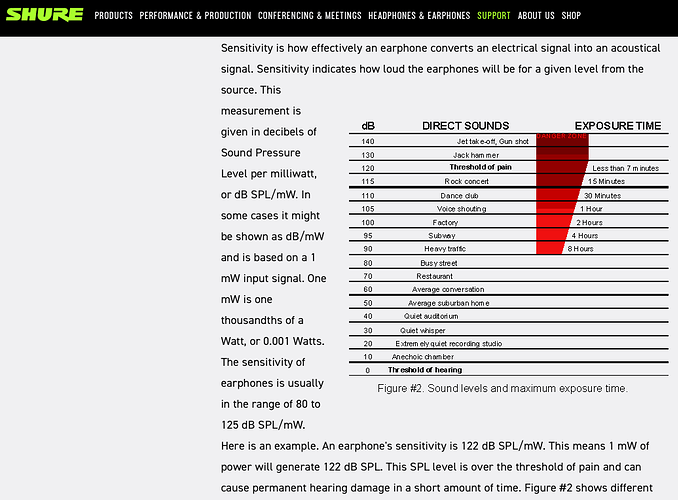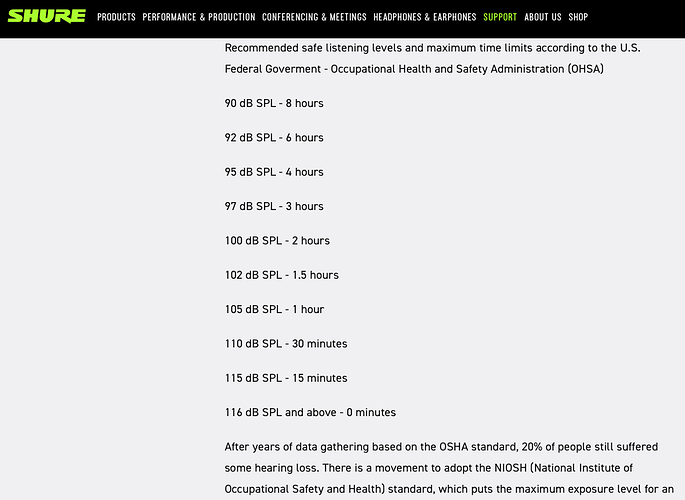Don’t get me wrong I have a full balanced headphone set up too haha.
A signal is between two leads. An unbalanced cable combines one signal lead with the shield around the cable, and is commonly connected to ground in the amp. A balanced cable keeps two signal leads and a separate shield and ground. In general balanced makes no difference to headphones which are not grounded. Balanced has slightly better protection against picking up RF noise, but that doesn’t matter since we don’t amplify the signal in the headphones.
As mentioned above, depending on the mp topology you may get twice the voltage (4X the power) with balanced connections, which matters only with very hard-to-drive cans.
(I have the very demanding Susvara cans, and the Chord Hugo TT2 can drive it adequately only in balanced mode. But note that Rob Watts of Chord prefers unbalanced, the TT2 normally doesn’t have an extra amp stage, the unbalanced output of his DAC has enough power to drive regular amps. To create a balanced output he needs an extra amp stage to create the negative signal, he prefers to minimize the number of stages for optimal transparency. So in his thinking, unbalanced is better, balanced is there only if the cans need it. I use unbalanced cables for my other cans.)
In unbalanced mode you max out on TT2’s volume with Susvara?
It isn’t about whether the volume is maxed out, unbalanced it’s anemic.
In balanced mode it sounds strong. Note I typically have the volume set at 9 dB below max, some margin but not much. And I’m not a metal head, I listen to acoustic jazz and chamber.
But the combination (M-Scaler + TT2 + Susvara) is sublime, brings out the tears.
EDIT It’s not only about sensitivity, it’s more about the very low impedance. It needs huge current. Why cranking up the volume doesn’t help.
Afriend’s demo of the 789 led me down the path.
I thought amplifiers were a solved problem, but the 789 blew that theory out of the water. And I got an SU-8 with. A great combination.
But then I continued the path and got a Benchmark HPA4 which also licensed the THX technology.
And the same friend also demoed the Hugo 2, and I recently added the 2go, the combination is terrific. Just used it out in the garden in the sun, Roon by WiFi from the house.
And I eventually graduated to a Hugo TT 2, takes the Hugo idea further.
These are all fabulous, at different price points.
Does balanced output have higher current output? Or higher voltage?
This may be one of those things where the objective data (technical performance data from Rob himself) doesn’t match with users subjective listening impressions…
What Rob Watts is saying (that the TT2 is ample) is certainly true for normal cans.
But the Susvara have 60 ohms impedance, 83 dB sensitivity.
The Audeze LCD-4 have 200 ohms and 97 dB.
So 14 dB difference in sensitivity is 25X difference in power, or 5X difference in voltage.
But 60 vs. 200 ohms, 3X difference, means 15X more current demand for the Susvara.
This makes the Susvara a special case.
I have a pair of 12 ohms MrSpeakers Aeon that Rob says even a Chord Mojo drives easily to ear bleeding SPL’s (with ultra low distortion).
What SPL’s are you listening at when using TT2?
I don’t measure SPL, but it’s not loud.
But it’s about both sensitivity and impedance.
The Aeon is 95 dB, according to a site I found.
I also have the Audeze LCD-4z, a low impedance design, 15 ohms and 98 dB.
The Hugo 2 drives it easily.
Similar to the Aeon.
If you do the math, you find:
15 ohm vs. 60 ohm is 4X less.
Since the formula for power is current squared times resistance, that means if the resistance is 4X less, current must be 2X.
So the lesser impedance is a much smaller effect.
But 83 dB vs. 97 dB is a huge difference.
Anyway, it’s not something to debate.
Most headphones are in broadly the same range, with some minor differences.
The Susvara is famously difficult.
Worth it, though.
I wouldn’t bother with comparing with other products (more this or less that).
I would look at the figures of the 2 respective products.
So looking at the sensitivity figure (83 dB per one (1) mW !), looking at Rob’s TT2 output power output measurements (still with ultra low distortion) and know that current is not the limiting factor…
Even if you listen at 100dB, how does the maths work at in mW of power required? And current required?
I don’t doubt your subjective listening impressions at all actually…
I’m just asking (out of interest) if objective numbers don’t always line up with the subjective side.
You’re enjoying the music and that’s obviously all that matters. Just some light weight friendly discussion here.
I have no way of looking at the absolute figures, I don’t have a way of measuring SPL of headphones, don’t even know how you would do that given it’s coup,ing to the head.
I can make meaningful comparisons.
I just played the Susvara and the Audeze LCD-4z with the Benchmark HPA4. The Susvara was connected balanced the LCD-4z unbalanced (I have a balanced cable for it somewhere but the hell with it). I’m listening to Anouar Brahen’s Blue Maqams, an all acoustic chamber jazz quintet piece. With the Susvara I set the volume to 0 dB (the device is capable of going higher). Trying for the same level with the LCD-4z I landed on -20 dB; the sensitivity difference is only 14, plus we have the unbalanced connection which is either adjusted for or lowers it an extra 6 dB. So I don’t quite know why the Susvara seems more sensitive than it should. But the sound, the color profile, of the two headphones is different enough that it is difficult to set the same level.
But the current capability of the amp, and the current draw of the cans, are indeed important. The volume control is a wish, it says I want it this loud, but if the amp can’t deliver that power (i.e. current) into the load of that headphone, you will get first wimpy sound and then distortion. I think we have all heard lo-fi stereos where the owner has cranked the volume up too high and all we get is harsh noise. That’s what I think happened with the Susvara unbalanced on the TT2, it couldn’t deliver and the cans sounded wimpy, balanced it could deliver. But I am pretty near the limit. The Benchmark performs equally well. But the Hugo 2 and the THX AAA 789, both admirable and both fine with the LCD-4z, did not have the strength to drive the Susvara (even though the 789 has a balanced output).
So i think this behavior is quite reasonable and quite consistent with specs.
And as I said, I am quite happy with all four amps and several cans.
Ignore all that other maths you mentioned. And look at the numbers specified by the designers of the 2 products in question… seems reasonable to me.
Bringing up Audeze is irrelevant to explain Susvara and makes no sense, when we have sensitivity for Susvara and we have power output of TT2.
You say “do the maths”, so indeed do the maths.
- Sensitivity figure (83 dB per one (1) mW !)
- Look at Rob’s TT2 output power output measurements (still with ultra low distortion)
- Calculate current required for Susvara for 100dB and look at current TT2 can supply (both RMS and peak are specified by Rob). Hint, the current supply is enormous.
If you listen at 100dB, how does the maths work at in mW of power required? And current required?
What about mW and current for 107dB?
Ahhh so the objective numbers don’t line up with the subjective impression??? ![]()
I don’t quite know what point you are arguing for?
How did this get started?
I said I needed to run it balanced, are you questioning that?
When someone says “do the math” I would hope they’ve attempted the math.
Anyway let’s end it with something I already said:
The THX AAA 789 is a great little HeadPhone Amp…I got 2 of them in case one ever dies on me.
My FiiO M11 is also sporting balanced headphone out as is my E1DA PowerDAC V2 that is only balanced and my OPPO HA1 and 2 also have balanced out. I also did a DIY IQAudIO Digiamp+ that has switched Balanced outs to 4way XLR for cans and 5way binding posts for speakers that is switchable.
I don’t see any current specs for the TT2, do you have that?
I see power specs for 300 ohms and 8 ohms, we would have to estimate 60 ohms.
Unbalanced we see 0.03 A @ 300 ohms, and 0.95 A @ 8 ohms.
Balanced we see the expected doubling at 300 ohms, at 8 ohms it can’t quite achieve that.
What can we expect at 60 ohms?
The voltage, which is the driving force, is 7.64 V at 8 ohms. If we get the same voltage at 60 ohms, we get just under 1 W.
At 300 ohms we get 9.3 V, so if we (somewhat optimistically) assume that voltage at 60 ohms we get 1.44.
So I’ll assume something just over 1 W at 60 ohms.
And balanced multiplies that by 4, so we get maybe 5-6 W.
Which is the recommended power for the Susvara, in forums.
Now I admit I don’t understand what the sensitivity at 1 mW means, I never have. I have never had a headphone amp of 1 mW power. Do you? Given that the TT2 boasts 18 W power, that’s 42 dB over 1 mW, so your Aeons with their 95 dB sensitivity would produce 137 dB SPL which makes no sense. And for the Susvara with 83 dB sensitivity, the TT2 would produce 125 dB SPL. Would probably fry the cans. Another way to look at it, I would need to set the volume to -30 dB for a reasonable level, and that’s not right either, I don’t hear anything at that setting.
So if you or anybody else can explain what that sensitivity rating means, I’d like to hear it.
It’s right there in the specs you quoted. You have RMS power and impedance so you can calculate RMS current.
Noted - subjective impressions.
None of this makes any sense. Hopefully this helps:
For headphones, XdB sensitivity @ 1mW usually equals to measured SPL @ 1mW @ 1kHz input to the DUT on a standardised measurement dummy head.
This is, what our ears are exposed to with that signal.
Now we take cited tables as a reference as to how long we’d be able to get away without permanent hearing loss at certain input powers.
We know, we have to double power for every 3dB increase of loudness.
For our example headphones with 83dB @ 1mW , that’ll be something like 6 hours @ 92dB @ 8mW.
It would have to be average listening level, since we’re listening to music.
Let’s then take a generous dynamic range value of 20, and we’re around 82 to 102dB for 6 hours.
That would require up to 128mW for the peaks with 1bB of headroom.


